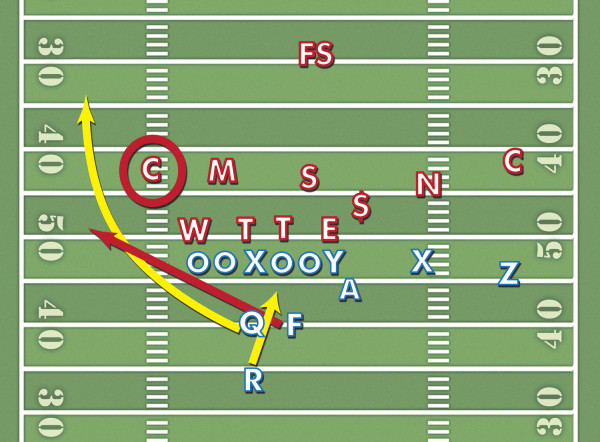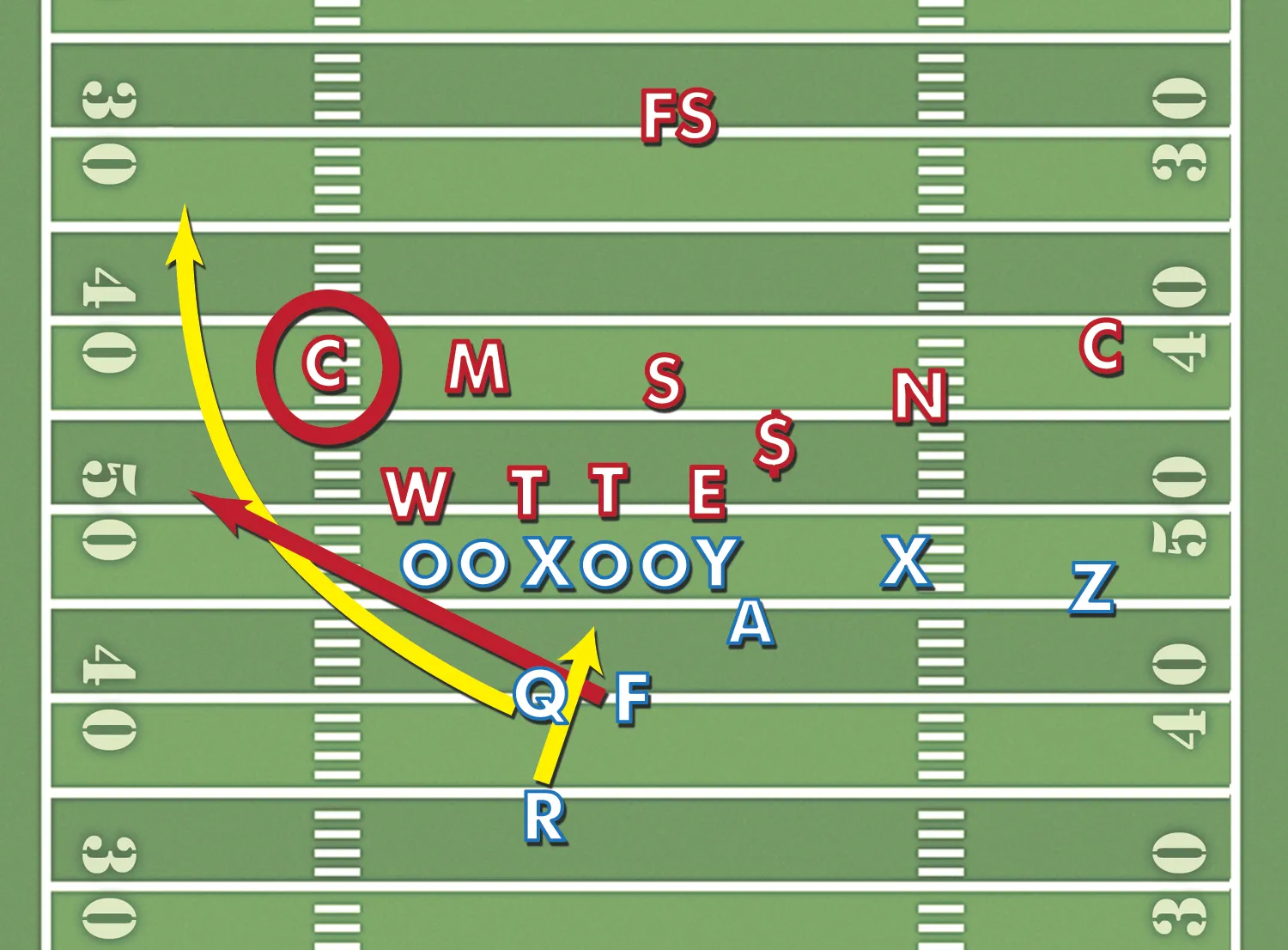Correction: The diagram shouldn’t have a player on the offense listed as “A.”
There are a lot of cliches that can accurately be used to describe Stanford’s 31-28 escape against Washington on Saturday night — both teams played hard and left everything on the field, there was a great deal of physical play across the board, playmakers on each team made clutch plays again and again, and so on. But an underrated element the game was the amount of creativity and fluidity that both teams brought to both sides of the ball. Stanford won, but it wasn’t because the Cardinal ran the same play sixty times.
In a game as close as this one, every possible advantage counted. Fans in Stanford Stadium may not have expected that one field goal would determine the outcome of the game, but as it turned out, that was the difference. This 19-yard run by quarterback Kevin Hogan led to the field goal that provided Stanford’s final victory margin. Giving Stanford a 10-point lead, Washington was forced to chase Stanford all game, and they eventually fell just short. To do that, Stanford freed up Hogan in what was a schematic work of art.

Stanford lined up in a heavily unbalanced set: four out of five potential receivers to the right of the quarterback, with running back Tyler Gaffney right behind Hogan. Understandably, Washington wanted to bring in as many defenders to Stanford’s strong side as possible, but overreacting to the unbalanced formation, the Huskies left only four players to the weak side.
Stanford’s formation seemed to be heavily biased towards the right, but it also displayed remarkable balance in the backfield. With three players behind the line of scrimmage, Stanford could easily flip six offensive players (including F) to the weak side and overwhelm the Washington defense.
As it was, Stanford did exactly that. Calling the ubiquitous zone read play, Stanford’s offensive line blocked to the right in unison, drawing the Washington defense’s attention to the right. After receiving the snap, Kevin Hogan had a choice: He could hand off the ball to Tyler Gaffney (R) going inside or keep the ball himself and run to the left. The choice depended on whether the Washington cornerback (circled in red) defended the outside or the inside — Hogan would direct the ball wherever the cornerback was not.
That is nothing new. Although it only recently took the NFL by storm, the zone read has been one of the most popular plays in college football for years. Defenses will typically block off the outside keeper and force the play to go towards the strong side, making the play look like a conventional run. What Stanford added to this play, however, was an arc block by the fullback, Ryan Hewitt (F). Because Hewitt was to the right of Hogan, the defense added strength to the right of Hogan. Since Hewitt was so close to the left side however, it was easy to flip the strength of the formation to the left. Stanford’s extra blocking added a dose of old-school football to a modern, trendy spread-offense play.
Washington went one way, and Stanford went the other: With Hewitt lead blocking for him, Hogan had plenty of room to run and slashed deep into Washington territory. Although Chris Ault, lately of Nevada, was well known for running this play, it was ironically the NFL that popularized it — specifically, inventive running teams such as Jim Harbaugh’s San Francisco 49ers.
Power football is not necessarily staid; on the contrary, it is inventive, creative and schematically devastating. On this play, Stanford took advantage of both numbers and leverage — numbers because of the balanced “unbalanced” set, but also leverage because Stanford’s blockers knew where they were going and the defense did not. Washington was caught literally flat-footed, and the result was one of many plays that gave birth to an instant classic.
On this play, the author is indebted to the keen insight of ESPN/Grantland columnist Chris Brown.
Contact Winston Shi at wshi94 ‘at’ stanford.edu.
